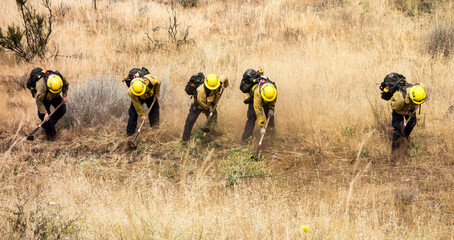What exactly is Fire Mitigation? Fire Mitigation is the process of reducing or controlling the risk of a fire damaging or destroying property. What this means to you is that you can have a much higher success rate if you prevent a fire from burning out in your house instead of having to deal with it afterward. Fire Mitigation also helps you minimize the long-term destructive effects that a fire has on your home by enhancing the structure of your house (including the materials utilized to construct your home) and making a more defensible place for you to live. If you want to know more about what the process of Fire Mitigation is all about, then read on.
What is Fire Prevention? Fire prevention refers to the use of various practices designed to stop fires before they start. Prevention can be achieved through education (for instance, educating students on using fire prevention equipment). Still, most often, it is more effective when it is also supported by legislation (like mandatory extinguishing of oil lamps and electrical fires in public buildings). The state of Colorado enacts many statutes that mandate certain things to make fire prevention a better practice. These laws are often referred to as comprehensive wildfire prevention laws.
What is Fireplace Care? Fireplace care refers to making sure that your home is equipped to fight fires in the case of a flare-up. This often means that homeowners will have to do everything possible to ensure that their home is as ready-to-eat as possible, which means stocking it with necessary supplies. Homeowners often find that filling their garages with essential items such as fuel, lumber, paper, newspaper, and pine needles makes the fire risk go down significantly. Of course, it is important to ensure that any chemicals you are storing in your garage are safe and secure.
What is National Forest Firewise? The term “National Forest” can broadly describe any place outside of urban areas designated as wilderness or protected ecological area. Many environmentalists think that there is too much land for people to use for recreational purposes, so the term “National Forest” is often used in connection with wildfire prevention. The National Forest Service manages a lot of the land designated as wilderness or protected ecological areas. In most cases, they are required to hold annual or semiannual meetings that involve government officials, conservationists, and local businesses to come up with solutions to the problems facing their communities.

What are Firewise Trees? Wildfire risk is considered so severe that officials prohibit people from planting trees in certain locations. While this might help reduce the amount of ash and smoke released during a wildfire, it does not address providing adequate defensible space around these trees.
So how can you tell if your neighborhood is at risk for wildfire? It helps to look at how close your neighbors live to your property. If your neighbor’s house is located near a tree that is at risk for falling, there is a good chance that you will be affected. The same is true for homeowners who have trees on their properties near their homes. It doesn’t matter whether you live in Denver, Fort Collins, or Colorado Springs; you should be concerned about your family’s health. You should also contact your local fire department and learn more about fire mitigation services.
They manage its hazardous fuels and hazards is through the implementation of an “urban renewal” policy. Through this policy, the city-owned lands located in the city’s urban core are zoned for use as defensible space around housing. In other words, if a homeowner decides to build an additional unit on their land or add a deck or backyard studio to their existing dwelling, the property owner must first consult with the City Engineer, who determines the best way to use the existing zoning regulations to protect the structure while using the land for practical purposes.
If you want to know more about fire prevention,, you might want to research the Internet. The following websites offer comprehensive information about this proactive program. You can also find out more about the American Civil Defense Association and the Fire Protection Association, which are experts on issues related to fire mitigation. It would be best if you never forgot to visit your local fire station to register your voice during “Learn About Fires” classes, held monthly.